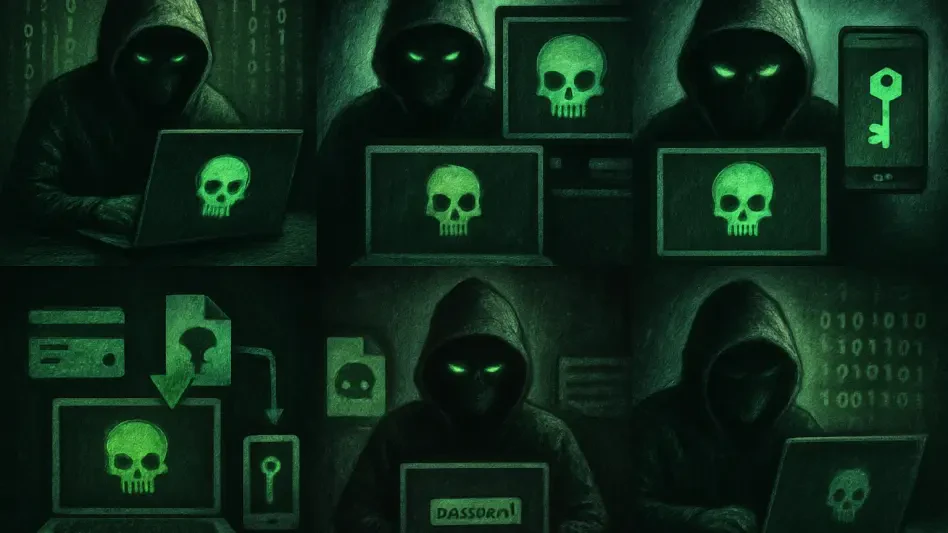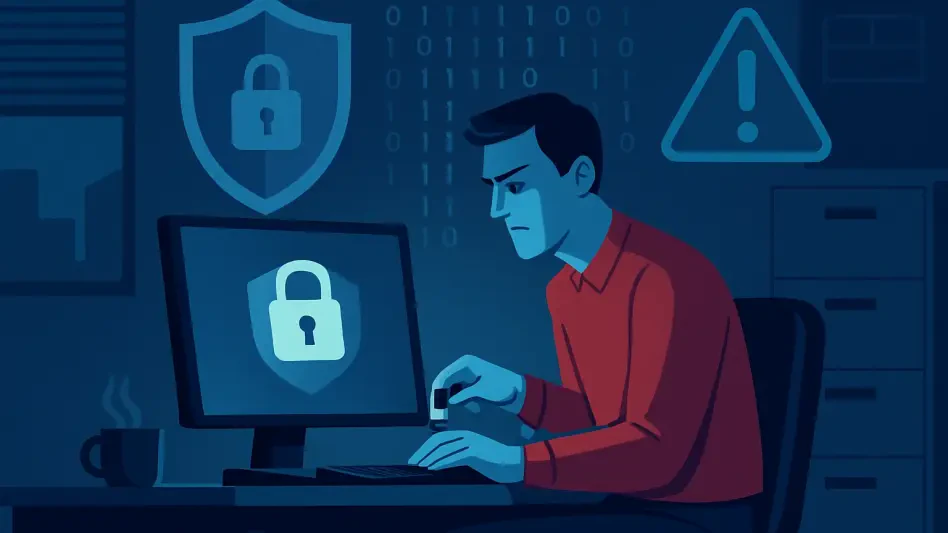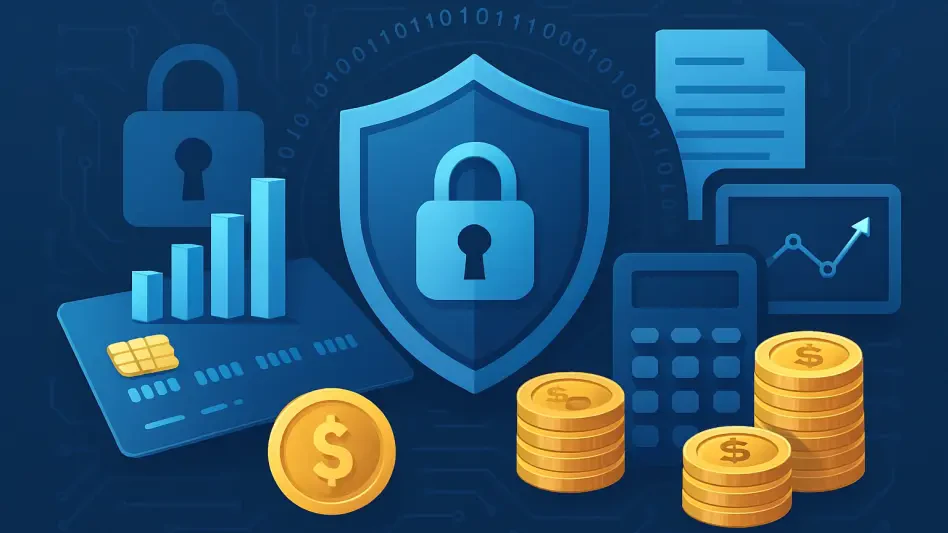In an alarming development within the cybersecurity landscape, a Python-based malware known as PXA Stealer has emerged as a formidable threat, orchestrating a massive data theft operation that has compromised over 200,000 unique passwords. This sophisticated campaign, which has targeted thousands of victims across 62 countries, leverages the messaging platform Telegram to facilitate the distribution and monetization of stolen data. Beyond passwords, the malware has also harvested hundreds of credit card records and millions of browser cookies, painting a grim picture of the scale and impact of this cybercriminal activity. The operation’s ability to evade detection through advanced techniques and its integration into a broader underground economy highlight the evolving nature of digital threats. As cybercriminals continue to refine their methods, understanding the mechanisms behind such attacks becomes crucial for bolstering defenses and mitigating risks in an increasingly connected world.
1. Unveiling the Scale and Reach of the Threat
The sheer magnitude of the PXA Stealer campaign sets it apart from typical malware operations, with over 4,000 unique victims identified across a diverse global landscape. South Korea, the United States, the Netherlands, Hungary, and Austria have borne the brunt of the attacks, illustrating the malware’s wide geographic footprint. First detected in late 2024, this Python-based stealer has rapidly evolved, incorporating advanced evasion tactics that challenge even the most robust security measures. The stolen data, encompassing not just passwords but also sensitive financial information, underscores the potential for severe personal and organizational harm. Analysts have noted that the operation’s success lies in its ability to adapt quickly, with threat actors continuously updating their strategies to bypass traditional detection tools. This adaptability, combined with the volume of compromised data, signals a pressing need for enhanced vigilance and innovative countermeasures to curb the spread of such threats.
Beyond its scale, the campaign’s orchestrators have demonstrated a deep understanding of cybercriminal ecosystems, leveraging Telegram’s infrastructure to streamline their operations. Vietnamese-speaking groups are believed to be behind this sophisticated network, which operates on a subscription-based model within underground forums. This structure allows for efficient automation of data theft and resale, feeding stolen credentials into platforms like Sherlock for downstream criminal use. Such industrialization of cybercrime transforms stolen data into a commodity, enabling activities ranging from cryptocurrency theft to unauthorized access to corporate systems. The global distribution of victims further complicates mitigation efforts, as jurisdictional challenges hinder coordinated responses. As the operation continues to evolve, it serves as a stark reminder of the borderless nature of cyber threats and the importance of international collaboration in addressing them.
2. Dissecting the Sophisticated Infection Chain
At the heart of PXA Stealer’s effectiveness lies a meticulously crafted infection mechanism that begins with deceptive phishing lures. Victims often receive large compressed archives containing seemingly legitimate files, such as a signed Microsoft Word 2013 executable. However, hidden within these archives is a malicious DLL, often named msvcr100.dll, which exploits Windows’ DLL search order to execute harmful code when the legitimate software runs. This sideloading technique ensures that the malware operates under the guise of trusted applications, making initial detection challenging for both users and security software. Once activated, the malware deploys a decoy document, such as a fake tax invoice, to maintain the illusion of legitimacy while distracting from the malicious processes running in the background. This multi-stage approach exemplifies the level of sophistication employed to maximize the attack’s success rate.
Further delving into the infection process reveals additional layers of complexity designed to thwart analysis. After the initial execution, the malware uses encoded commands to decode embedded archives with tools like certutil, subsequently extracting them via a disguised WinRAR executable. A portable Python interpreter, renamed to mimic legitimate system processes like svchost.exe, runs obfuscated scripts to carry out data theft. Persistence is ensured through the creation of Registry Run keys, allowing the malware to reactivate upon system restarts and maintain long-term access to compromised devices. These tactics not only evade traditional antivirus solutions but also delay forensic investigations by embedding anti-analysis features. The intricate design of this infection chain highlights the technical prowess of the threat actors and underscores the urgent need for advanced detection methods to identify and neutralize such stealthy attacks before they cause widespread damage.
3. Monetization and the Underground Economy
A distinguishing feature of this cybercriminal operation is its seamless integration into a comprehensive monetization framework that fuels a self-sustaining criminal economy. Stolen data, once harvested, is systematically normalized and categorized on platforms like Sherlock, where it becomes readily available for purchase by other malicious actors. This industrial approach transforms personal information into a tradable asset, facilitating a range of illicit activities from financial fraud to organizational breaches. The use of Telegram’s API infrastructure plays a critical role in this process, enabling automated distribution and communication channels that are difficult to trace or disrupt. Such efficiency in data handling and resale amplifies the impact of the initial theft, as compromised credentials can be exploited multiple times by different parties within the underground network.
The economic model behind this campaign also reveals the adaptability of cybercriminals in exploiting modern technologies for profit. By offering stolen data through subscription-based services, the threat actors ensure a steady revenue stream while minimizing their exposure to law enforcement. This approach not only incentivizes the continuous refinement of attack methods but also attracts a broader pool of downstream criminals seeking access to high-value information. The harvested passwords and credit card details often lead to direct financial losses for victims, while browser cookies enable further unauthorized access to personal accounts. As this cycle of theft and resale perpetuates, it becomes evident that disrupting these monetization channels is as critical as preventing the initial infection. Strategies to combat such threats must therefore focus on dismantling the infrastructure that supports this underground economy, alongside bolstering user awareness to reduce susceptibility to phishing lures.
4. Lessons Learned and Future Safeguards
Reflecting on the extensive damage caused by PXA Stealer, it became clear that traditional security measures were insufficient against such advanced threats. The campaign’s success in evading detection through sideloading and multi-stage infection chains exposed critical gaps in existing defenses. Cybersecurity teams had to pivot quickly, emphasizing the importance of behavioral analysis and anomaly detection to identify suspicious activities that signature-based tools missed. The global reach of the attack also highlighted the need for international cooperation, as fragmented responses proved inadequate against a threat that transcended borders. Sharing intelligence and best practices across nations emerged as a vital step in curbing the spread of stolen data.
Moving forward, organizations and individuals must adopt proactive measures to safeguard against similar threats. Implementing robust endpoint protection that monitors for unusual DLL executions and phishing attempts can serve as a first line of defense. Additionally, educating users about the dangers of opening unsolicited archives or documents remains essential in breaking the infection chain. On a broader scale, disrupting the monetization platforms used by cybercriminals should be prioritized, potentially through targeted operations against underground marketplaces. Investing in advanced threat intelligence and fostering collaboration between public and private sectors will also be key to staying ahead of evolving tactics. By learning from past oversights, the cybersecurity community can build a more resilient framework to protect against the next wave of sophisticated malware campaigns.








